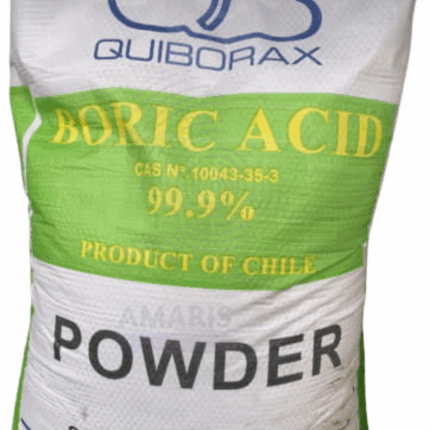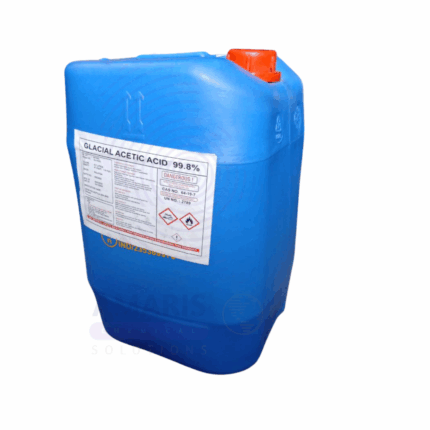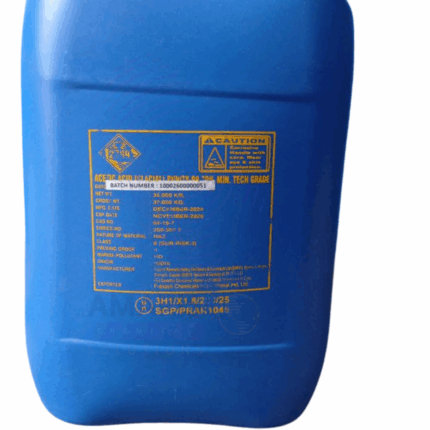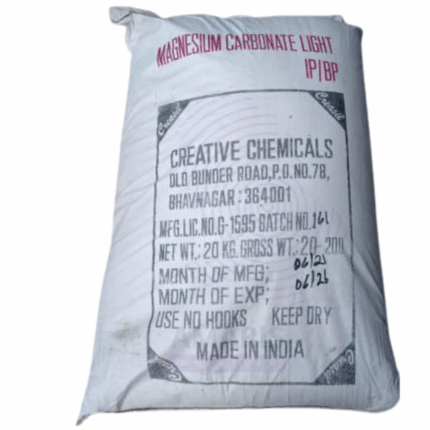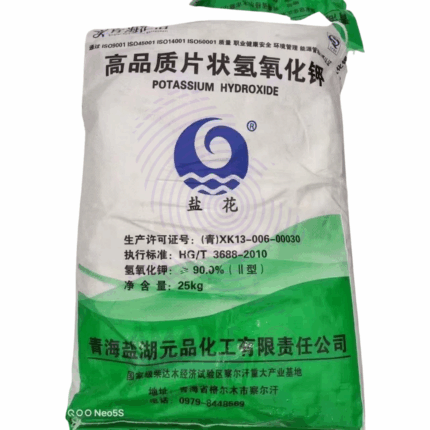“Borax Decahydrate” has been added to your cart. View cart
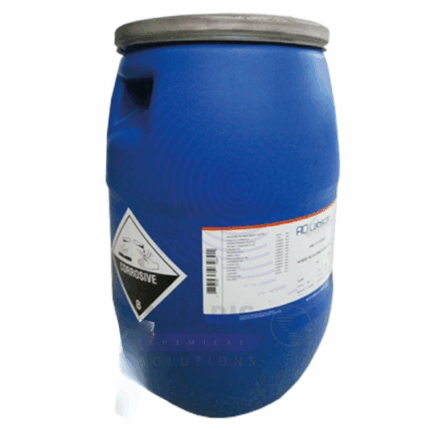
Disodium Hydrogen Phosphate
$ 2.00 Original price was: $ 2.00.$ 1.35Current price is: $ 1.35.
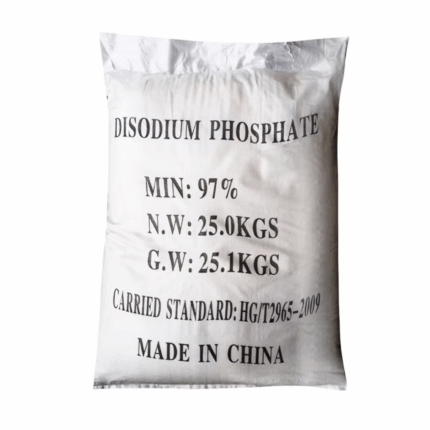
Disodium Phosphate
$ 2.00 Original price was: $ 2.00.$ 1.32Current price is: $ 1.32.
Disodium Hydrogen Phosphate Dihydrate (Na₂HPO₄·2H₂O)
Whatsapp Order
Disodium Hydrogen Phosphate Dihydrate is the hydrated form of disodium hydrogen phosphate, a white crystalline powder commonly used as a buffering agent, emulsifier, and sequestrant. The dihydrate form contains two water molecules per formula unit, which affects its physical properties such as melting point and solubility. It is widely applied in food, pharmaceutical, water treatment, and industrial processes to maintain pH stability, improve texture, and supply essential sodium and phosphate ions.
Categories: Animal Feed Additives, Emulsifiers, Excipients, Fertilizers, Nutraceutical Ingredients (pharmaceutical), Nutrient Supplements, pH Adjusters
Tags: Chemical manufacturing, Disodium Hydrogen Phosphate Dihydrate, Food industry, Hydrated salt, Pharmaceutical industry, Water treatment industry
Description
Table of Contents
Toggle
Disodium Hydrogen Phosphate Dihydrate (Na₂HPO₄·2H₂O) Uses
Primary Uses
- Food & Beverage Industry
- Serves as a buffering agent to regulate acidity and alkalinity in processed foods, dairy products (e.g., cheese, milk powders), and beverages.
- Acts as an emulsifier and stabilizer in dairy and meat products to enhance texture, moisture retention, and shelf life.
- Functions as a sequestrant to bind metal ions and improve flavor and color stability.
- Used in baking powders as a leavening agent component to control rising.
- Added to nutritional and mineral supplements as a source of phosphate and sodium ions.
- Pharmaceuticals & Healthcare
- Used as a buffering agent in intravenous fluids, oral rehydration solutions, and pharmaceutical formulations to maintain pH balance.
- Included as an excipient in tablets and capsules to aid controlled drug release.
- Plays a role in parenteral nutrition formulations supplying electrolytes.
- Water Treatment
- Employed to control pH and prevent scale formation and corrosion in boilers and cooling systems.
- Acts as a dispersing agent for solids in water systems, maintaining homogeneity.
- Agriculture & Fertilizers
- Supplies phosphate and sodium in fertilizer formulations to enhance soil fertility and crop nutrition.
- Used in hydroponic nutrient solutions to promote plant growth.
- Industrial Applications
- Used in detergent formulations as a builder and pH stabilizer.
- Functions as a buffering and dispersing agent in ceramics, textiles, and paper industries.
Secondary Uses
- Laboratory Reagent
- Commonly used in buffer solutions for biochemical assays, enzyme reactions, and molecular biology research.
- Maintains stable pH environments essential for protein purification and DNA/RNA work.
- Cosmetics & Personal Care
- Acts as a pH adjuster and stabilizer in lotions, creams, and other personal care formulations.
- Animal Feed
Added to animal feeds as a mineral supplement providing phosphate and sodium for metabolic processes.
PRODUCT KEY FEATURES
- Basic Identification Attributes
- Chemical Name (IUPAC): Disodium hydrogen phosphate dihydrate
- Common/Trade Name: Disodium Phosphate Dihydrate, Sodium Phosphate Dibasic Dihydrate
- CAS Number: 7788-57-6
- HS Code: 2835.25.00
- Molecular Formula: Na₂HPO₄·2H₂O
- Synonyms:
- Disodium phosphate dihydrate
- Sodium phosphate dibasic dihydrate
- Sodium hydrogen phosphate dihydrate
- Physical & Chemical Properties
- Physical State: White crystalline powder or granules
- Odor: Odorless
- Melting Point: Decomposes at ~100–120°C (loss of water of crystallization)
- Solubility: Highly soluble in water; insoluble in alcohol
- pH (1% aqueous solution): Approximately 9.0–10.5 (alkaline)
- Stability: Stable under normal storage conditions; hygroscopic
- Safety & Hazard Attributes
- Hazard Class (GHS): Not classified as hazardous
- Toxicity: Low toxicity; generally recognized as safe (GRAS) for food use
- Exposure Limits: No specific occupational limits established
- Storage & Handling Attributes
- Storage Conditions: Store in a cool, dry area protected from moisture and contaminants
- Container Type: Paper bags with polyethylene lining, plastic drums
- Shelf Life: 2–3 years if stored properly
- Handling Precautions: Avoid dust generation; use PPE to prevent eye and skin contact
- Regulatory & Compliance Attributes
- Approved worldwide as a food additive and pharmaceutical excipient
- Listed in USP, EP, FCC
- Compliant with REACH and other chemical regulations
- Environmental & Health Impact
- Ecotoxicity: Low
- Persistence: Biodegradable
- Bioaccumulation: Not expected
Carcinogenicity/Mutagenicity: Not classified
SAFETY HANDLING PRECAUTIONS
Safety Handling Precautions
PPE Required:
- Dust mask or respirator (for dusty environments)
- Safety goggles
- Gloves (nitrile or latex)
- Protective lab coat or apron
Handling Guidelines:
- Handle in well-ventilated areas to avoid dust inhalation
- Avoid contact with eyes and skin
- Employ dust suppression or extraction systems when transferring in bulk
Storage Measures:
- Keep containers tightly sealed to prevent moisture absorption
- Store away from strong acids and incompatible materials
- Avoid exposure to humidity and high temperatures
Hygiene Practices:
- Wash hands thoroughly after handling
- Do not eat, drink, or smoke during handling
- Maintain a clean working environment to prevent contamination
First Aid Measures
- Inhalation: Move to fresh air; seek medical attention if irritation persists
- Skin Contact: Wash with soap and water; seek medical advice if irritation occurs
- Eye Contact: Rinse with plenty of water for 15 minutes; seek medical advice if irritation continues
- Ingestion: Rinse mouth; generally low toxicity but seek medical help if large quantities ingested
Firefighting Measures
- Fire Hazards: Non-flammable and non-combustible
- Extinguishing Media: Water spray, foam, dry chemical, or CO₂ suitable for surrounding fire
- Special Precautions: Use standard firefighting protective equipment
- Decomposition Products: May emit sodium oxides and phosphorus oxides at very high temperatures
Related products
Boric Acid
Boric Acid, chemically known as hydrogen borate or boracic acid, is a weak, monobasic Lewis acid of boron. It appears as a white, crystalline powder or granules that are odorless and slightly soluble in water. Boric Acid is commonly used in antiseptics, insecticides, flame retardants, and as a buffering agent in various industrial and pharmaceutical applications. Due to its mild antiseptic and antifungal properties, it is often used in ophthalmic, dermatologic, and other personal care formulations. It also plays a key role in glass and ceramics manufacturing as well as in agriculture.
Disodium Phosphate
Disodium Phosphate, also known as sodium phosphate dibasic, is an inorganic compound widely used for its buffering, emulsifying, and chelating properties. It commonly appears as a white, odorless crystalline powder or granules that are highly soluble in water and alkaline in nature. Disodium Phosphate plays a vital role in regulating pH, improving stability in formulations, and providing essential sodium and phosphate ions. It finds extensive use across food processing, pharmaceuticals, water treatment, agriculture, and industrial applications.
Glacial Acetic Acid Food Grade
Glacial Acetic Acid Food Grade is a clear, colorless liquid organic compound with a pungent vinegar-like odor. It is a high-purity form of acetic acid specifically produced and processed for safe use in food applications. As the main component of vinegar (after dilution), it serves as a critical flavoring agent, pH adjuster, and preservative in the food industry. Food-grade acetic acid typically has a concentration of 80-100% (glacial acetic acid) or is diluted to lower concentrations (4-20%) for specific applications.
Glacial Acetic Acid Tech grade
Glacial Acetic Acid Tech grade is a clear, colorless liquid with a pungent vinegar-like odor. It is a less refined form of acetic acid primarily used for industrial and technical applications rather than food or pharmaceutical uses. Typically available in concentrations ranging from 80% to glacial (99-100%), it serves as a crucial chemical reagent, solvent, and intermediate in various industrial processes.
Indion Cation Resin
Indion Cation Resin is a synthetic ion exchange resin designed primarily for the removal of positively charged ions (cations) from water and various liquid streams. Typically composed of a sulfonated polystyrene-divinylbenzene (PS-DVB) copolymer, this resin features a highly porous bead structure with functional groups that exchange hydrogen or sodium ions for calcium, magnesium, iron, and other metallic cations. Available in different forms (strong acid cation, weak acid cation), Indion Cation Resin is widely used in water treatment, industrial processes, and purification systems.
Magnesium Carbonate Light
Magnesium Carbonate Light is a fine, white, odorless powder primarily composed of magnesium carbonate (MgCO₃). It is characterized by its light texture and high purity. This mineral compound is widely used across various industries due to its excellent absorption properties, mild alkalinity, and non-toxic nature. Magnesium Carbonate Light is commonly employed as an antacid, drying agent, filler, and flow aid in food, pharmaceutical, cosmetic, and industrial applications.
Magnesium Chloride
Magnesium Chloride is a white crystalline salt or granular solid composed of magnesium and chloride ions, commonly found as the hexahydrate form (MgCl₂·6H₂O). It is highly soluble in water, forming a clear, colorless solution with a slightly bitter saline taste. Magnesium Chloride is valued for its hygroscopic properties and is widely used across multiple industries including de-icing, chemical manufacturing, agriculture, food, pharmaceutical, and textile applications. It acts as a source of magnesium, a vital mineral for various biological and industrial processes.
Potassium Hydroxide
Potassium Hydroxide is a highly concentrated, caustic alkaline chemical available as a solid (pellets, flakes) or concentrated aqueous solution. It is a strong base widely used in industrial processes, chemical manufacturing, and as a reagent. Potassium Hydroxide provides excellent neutralizing, saponifying, and cleaning properties and is essential in producing potassium soaps, biodiesel, fertilizers, and various chemical compounds. Its high purity and concentration (90%) make it suitable for demanding applications requiring strong alkalinity.


 Preservatives(food)
Preservatives(food) Flavor Enhancers
Flavor Enhancers Acidulants
Acidulants Sweeteners
Sweeteners Antioxidants
Antioxidants Colorants(food)
Colorants(food) Nutraceutical Ingredients (food)
Nutraceutical Ingredients (food) Nutrient Supplements
Nutrient Supplements Emulsifiers
Emulsifiers
 Collectors
Collectors Dust Suppressants
Dust Suppressants Explosives and Blasting Agents
Explosives and Blasting Agents Flocculants and Coagulants
Flocculants and Coagulants Frothers
Frothers Leaching Agents
Leaching Agents pH Modifiers
pH Modifiers Precious Metal Extraction Agents
Precious Metal Extraction Agents
 Antioxidants(plastic)
Antioxidants(plastic) Colorants (Pigments, Dyes)
Colorants (Pigments, Dyes) Fillers and Reinforcements
Fillers and Reinforcements Flame Retardants
Flame Retardants Monomers
Monomers Plasticizers
Plasticizers Polymerization Initiators
Polymerization Initiators Stabilizers (UV, Heat)
Stabilizers (UV, Heat)
 Antifoaming Agents
Antifoaming Agents Chelating Agents
Chelating Agents Coagulants and Flocculants
Coagulants and Flocculants Corrosion Inhibitors
Corrosion Inhibitors Disinfectants and Biocides
Disinfectants and Biocides Oxidizing Agents
Oxidizing Agents pH Adjusters
pH Adjusters Scale Inhibitors( water)
Scale Inhibitors( water)
 Antioxidants(cosmetic)
Antioxidants(cosmetic) Emollients
Emollients Fragrances and Essential Oils
Fragrances and Essential Oils Humectants
Humectants Preservatives
Preservatives Surfactants(cosmetic)
Surfactants(cosmetic) Thickeners
Thickeners UV Filters
UV Filters
 Fertilizers
Fertilizers Soil Conditioners
Soil Conditioners Plant Growth Regulators
Plant Growth Regulators Animal Feed Additives
Animal Feed Additives Biostimulants
Biostimulants Pesticides (Herbicides, Insecticides, Fungicides)
Pesticides (Herbicides, Insecticides, Fungicides)
 Active Pharmaceutical Ingredients (APIs)
Active Pharmaceutical Ingredients (APIs) Excipients
Excipients Solvents(pharmaceutical)
Solvents(pharmaceutical) Antibiotics
Antibiotics Antiseptics and Disinfectants
Antiseptics and Disinfectants Vaccine Adjuvants
Vaccine Adjuvants Nutraceutical Ingredients (pharmaceutical)
Nutraceutical Ingredients (pharmaceutical) Analgesics & Antipyretics
Analgesics & Antipyretics
 Analytical Reagents
Analytical Reagents Solvents(lab)
Solvents(lab) Chromatography Chemicals
Chromatography Chemicals Spectroscopy Reagents
Spectroscopy Reagents microbiology-and-cell-culture-reagents
microbiology-and-cell-culture-reagents Molecular Biology Reagents
Molecular Biology Reagents Biochemical Reagents
Biochemical Reagents Inorganic and Organic Standards
Inorganic and Organic Standards Laboratory Safety Chemicals
Laboratory Safety Chemicals Specialty Laboratory Chemicals(Special Laboratory Equipment)
Specialty Laboratory Chemicals(Special Laboratory Equipment)
 Demulsifiers
Demulsifiers Hydraulic Fracturing Fluids
Hydraulic Fracturing Fluids Scale Inhibitors(oil)
Scale Inhibitors(oil) Surfactants(oil)
Surfactants(oil) Drilling Fluids
Drilling Fluids
 Dyes and Pigments
Dyes and Pigments Bleaching Agents
Bleaching Agents Softening Agents
Softening Agents Finishing Agents
Finishing Agents Antistatic Agents
Antistatic Agents
 Admixtures
Admixtures Waterproofing Agents
Waterproofing Agents Sealants and Adhesives
Sealants and Adhesives Curing Compounds
Curing Compounds Concrete Repair Chemicals
Concrete Repair Chemicals Anti-Corrosion Coatings
Anti-Corrosion Coatings
 Surfactants(cleaning)
Surfactants(cleaning) Builders
Builders Enzymes
Enzymes Solvents (Cleaning)
Solvents (Cleaning) Fragrances
Fragrances
 Electronic Chemicals
Electronic Chemicals Catalysts
Catalysts Lubricants
Lubricants Photographic Chemicals
Photographic Chemicals Refrigerants
Refrigerants Automotive chemicals
Automotive chemicals Pyrotechnic Chemicals
Pyrotechnic Chemicals
 Biodegradable Surfactants
Biodegradable Surfactants Bio-based Solvents
Bio-based Solvents Renewable Polymers
Renewable Polymers Carbon Capture Chemicals
Carbon Capture Chemicals Wastewater Treatment Chemicals
Wastewater Treatment Chemicals
 Pigments
Pigments Solvents(paint)
Solvents(paint) Specialty Coatings
Specialty Coatings Binders/Resins
Binders/Resins Additives
Additives Driers
Driers Anti-Corrosion Agents
Anti-Corrosion Agents Functional Coatings
Functional Coatings Application-Specific Coatings
Application-Specific Coatings
 Fresh Herbs
Fresh Herbs Ground Spices
Ground Spices Whole Spices
Whole Spices Spice Blends
Spice Blends Dried Herbs
Dried Herbs
 Leavening Agents
Leavening Agents Dough Conditioners
Dough Conditioners Flour Treatments
Flour Treatments Fat Replacers
Fat Replacers Decoratives
Decoratives Preservatives(baking)
Preservatives(baking)
 Plasticizers & Softeners
Plasticizers & Softeners Reinforcing Agents
Reinforcing Agents Adhesion Promoters
Adhesion Promoters Vulcanizing Agents
Vulcanizing Agents Antidegradants
Antidegradants Blowing Agents
Blowing Agents Fillers & Extenders
Fillers & Extenders Accelerators & Retarders
Accelerators & Retarders




